Last updated on December 21, 2023
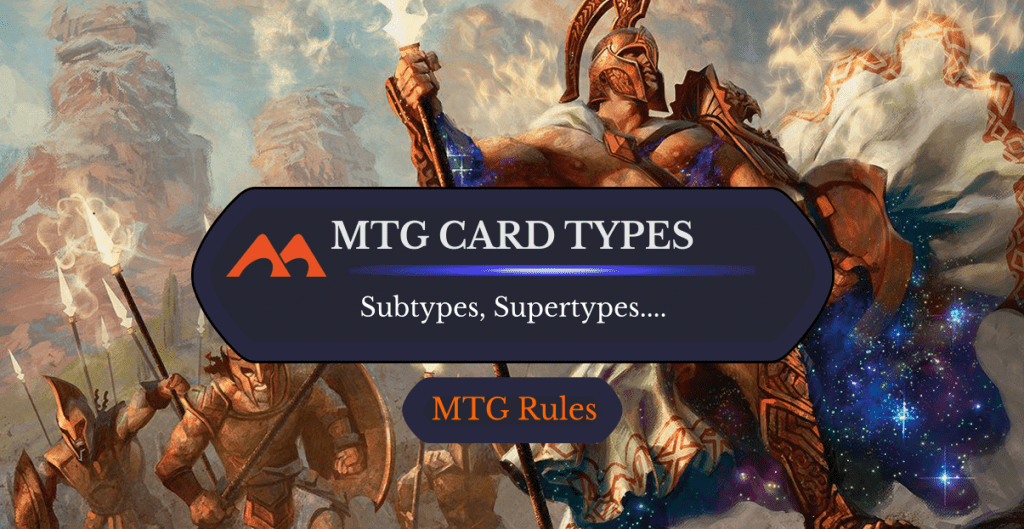
Archetype of Courage | Illustration by Willian Murai
If I were to ask you to name all of the card types in Magic, I’m guessing that most of you would be able to name most of them off the top of your head. Or maybe you’re not sure exactly what a card type is.
Do you know what a supertype or a subtype is? Whether you think you know what all of the various types are or you have no idea what I’m talking about so far, I’m going to detail everything you need to know about all of Magic’s different types of cards.
We're skipping over tokens, which are permanents, but not cards, we've got a lot of ground to cover, so let’s get started!
The Basics: Regular Card Types
Every card in Magic has at least one type. It may also have some supertypes or some subtypes. To figure out what all of these mean, let’s take a look at a card that has all of these.

This is the “type line” of a Magic card. Specifically, this is the type line of one of my favorite new cards from Strixhaven: Zimone, Quandrix Prodigy. On this type line, we have a supertype (legendary), a type (creature), and two subtypes (“human” and “wizard”).
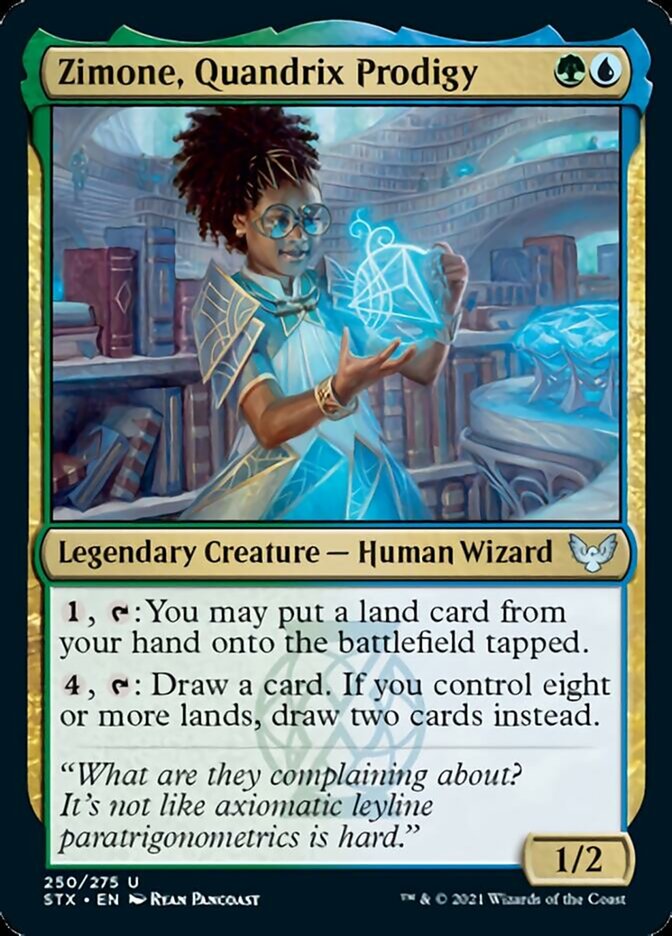
If you see a dash on the type line on any given card, then everything to the right of it is a subtype. On the left side, you have the supertypes followed by the card’s main type.
Full List of MTG Card Types
There are seven main card types that are printed in every set. You’re probably familiar with each of them. They are:
- Planeswalker
- Creature
- Instant
- Sorcery
- Enchantment
- Artifact
- Land
Beyond these seven, there are six more that exist but that don’t get printed in every set for various reasons, bringing our total up to thirteen. These are:
- Battle. Another special type introduced in March of the Machine, battle cards feature new subtypes with unique effects. For example, the “siege” subtype lets you basically assign it to an opponent to protect, then everyone else can attack it and it transforms into the backside when it's defeated.
- Conspiracy. A favorite of mine but a type that can’t start the game in your main deck and only has effects that work if you drafted them. Every conspiracy card is permanently banned in every Constructed format.
- Dungeon. This is a special type introduced in Dungeons and Dragons: Adventures in the Forgotten Realms. Dungeons are a set-specific way to get additional effects and live in the command zone while in play.
- Plane and Phenomenon. Yes, these are card types. They only exist on the oversized cards for the Planechase format, but they still count.
- Scheme. Yet another type of oversized card printed for a casual format. This time, this is for the Archenemy format.
- Tribal/Kindred. This card type is still around in Modern and Legacy but has been renamed to Kindred and declared obsolete by R&D as it often doesn’t work the way WotC intended.
- Vanguard. If you played Magic a very long time ago, then you might be familiar with Vanguard cards. Again, these were oversized cards so they couldn’t go into your deck and were a precursor to what eventually became Commander.
Supertypes: How are They Different?
There are only five supertypes in Magic and each of them means something different. A supertype appears in front of a card’s main type on the type line. Each one potentially changes the rules associated with that card.
Just like everything else on a card’s type line, supertypes act as markers that can be referenced by other card effects (e.g., “Target legendary permanent”). Let’s go over all five and discuss how each changes the rules.
Full List of MTG Supertypes
Basic
It’s impossible to not have encountered basic lands if you’ve played Magic. There are only eleven different basic lands in Magic (the five obvious ones, the five snow-covered lands, and Wastes). Basic lands can exceed the 4-copies-per-deck limit, as well as Singleton’s 1-copy-per-deck limit.
Legendary
It’s also very likely that you’ve encountered legendary cards. Legendary permanents are subject to what’s called “The Legend Rule.” If you control two or more legendary permanents with the exact same name, you must choose one to keep and the rest are put into the graveyard.
The same character might have two different cards with different names, like Akiri, Line-Slinger and Akiri, Fearless Voyager. These can each exist on the battlefield without the legend rule kicking in. Legendary sorceries also exist, despite not being permanents. A legendary sorcery can only be cast if you control a legendary creature or planeswalker.
Snow
We’ve only seen snow cards a few times in Magic’s history, but twice in the last couple of years in both Kaldheim and Modern Horizons. Snow cards not only have a beautiful snowy aesthetic, but mana produced by snow cards is considered to be snow mana.
World
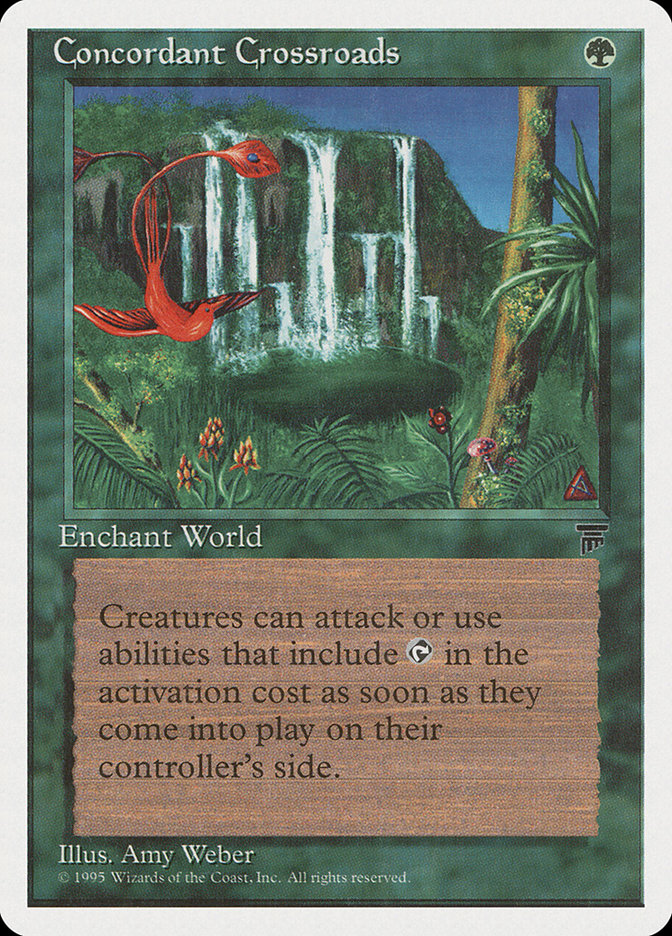
This is a supertype that only applies to enchantments. There can only ever be one world enchantment on the battlefield at a time. Playing a new one causes the previous one to be put in the graveyard. This is called “The World Rule.” World is an obsolete supertype and hasn’t been printed in decades.
Ongoing

I’d say the vast majority of Magic players have never heard of this one. That’s because it’s a supertype that only applies to some scheme cards printed for the Archenemy format. While you get one use out of regular schemes, ongoing schemes stay active until they get abandoned once set in motion.
All About MTG Subtypes
Subtypes are very different from types or supertypes. They don’t serve any specific purpose other than being a marker that other effects can refer to. In addition, each card type has its own set of subtypes that can only correlate to that type.
There are artifact types, enchantment types, creature types, land types, planeswalker types, and spell types that can be on either instants or sorceries. These subtypes only ever appear on the corresponding types of cards. Tribal has a unique function in that it allows creature types to be assigned to the other types. You’ll see type lines like “Tribal Enchantment – Faerie” as with Bitterblossom or “Tribal Instant – Shapeshifter” like on Nameless Inversion.
Full List of MTG Subtypes
There are quite a lot of different subtypes from Magic’s history. Let’s go down each card type and look at each corresponding subtype.
Creature Subtypes
Like I said earlier, there are over 250 different creature subtypes. There are new creature subtypes being made all the time, so it’s always best to check the oracle text of a creature to see its subtypes. I don’t have the room to go down every single one of them, but here are a few of the most common ones and some of my own personal fun favorites for when I need to name a random type (like when casting Crippling Fear):
Land Subtypes
There are five basic land subtypes that you probably know pretty well: Plains, Island, Swamp, Mountain, and Forest. The basic land subtypes automatically give lands the ability to tap for the color of mana that corresponds to that type.
The other land subtypes are:
- Cave
- Desert
- Gate
- Lair
- Locus
- Urza’s (Mine, Power-Plant, and Tower)
Spell Subtypes
Artifact Subtypes
An artifact’s subtype can affect how that artifact functions. Equipment and fortifications can be attached to other permanents you control and have abilities that allow you to attach them. Vehicles have an associated crew cost that allow you to turn them into creatures for the turn.
Here are all of the artifact subtypes:
- Clue
- Equipment
- Food
- Gold
- Treasure
- Vehicle
- Contraption: While contraption is an artifact type in the rules, these only exist in the Unstable set.
- Fortification: Fortification was a type created for only one card in Future Sight: Darksteel Garrison. Fortifications can be attached to lands in much the same way as equipment can be attached to creatures.
Enchantment Subtypes
Like artifacts, enchantment subtypes can affect how the card functions. Auras have to be attached to the object specified by the enchant keyword on the card’s text. When casting an aura spell, you need to declare a target for it to enchant when it enters. Sagas have a different template where they enter the battlefield with a lore counter and then gain an additional counter each turn.
Here’s the full list of enchantment subtypes:
Planeswalker Subtypes
Since planeswalkers represent characters in Magic’s lore, each card has a planeswalker subtype that corresponds to the character the card represents. There are several dozens of different characters represented by these types, including community favorites such as:
- Gideon
- Jace
- Liliana
- Chandra
- Nissa
- Ajani
- Kaya
- Tibalt
- Bolas
Battle Subtypes
Can a Card Have More Than One Type?
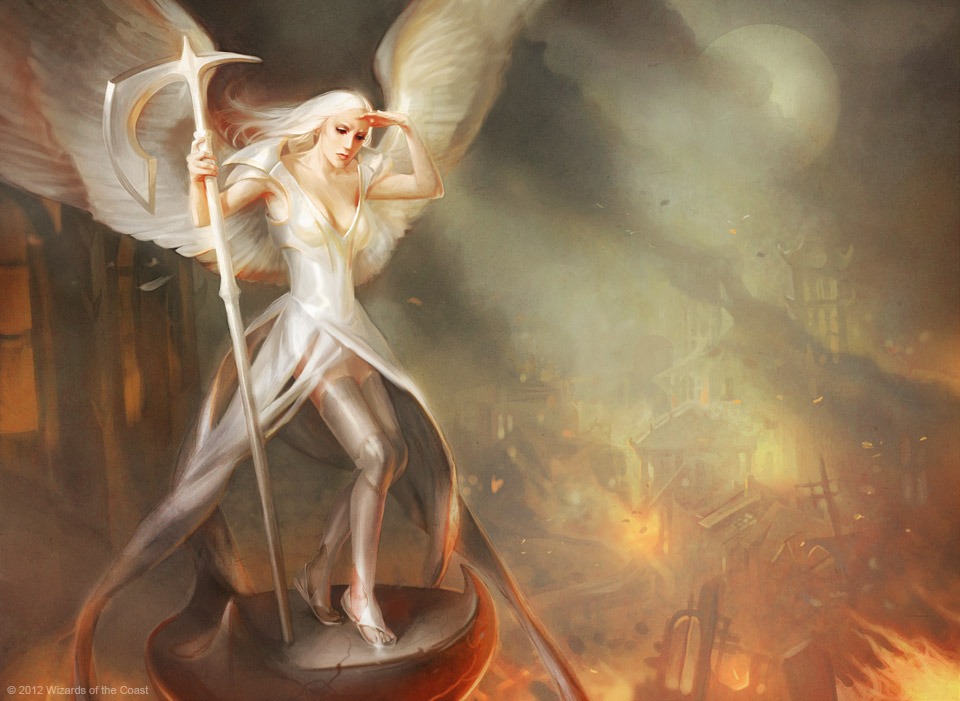
Sublime Archangel | Illustration by Cynthia Sheppard
As you may have already noticed, it’s very possible to have more than one type on a card. Magic is full of artifact creatures and there are lots of other combinations that exist. Enchantment artifacts, enchantment creatures, artifact lands, and so on.
Tribal is a weird type. While it’s technically a card type, it isn’t possible for a card to be tribal and not another type. There are sorceries, instants, artifacts, and enchantments that all have the tribal type tacked on.
Which Card Types Are Permanents?
A permanent type is any card type that applies to cards that are able to exist on the battlefield. They’re only considered to be permanents while on the battlefield and are referred to as “permanent cards” when they’re elsewhere, like in the effect of Aether Helix. Permanent types include creature, land, artifact, enchantment, and planeswalker.
Which Card Types Are Spells?
A spell is any card that’s not a land. That’s a very simple way to determine which cards are considered spells. It doesn’t matter if that land has other card types like Dryad Arbor or Ancient Den; every land is not a spell.
This rule has a number of applications. Cards are considered to be spells as long as they’re on the stack and nowhere else. For example, if we look at a card like Mindbreak Trap, it says “exile any number of target spells.” It would be too powerful if you could exile any number of creatures on the battlefield, so this only refers to cards that are on the stack.
Only spells can be “cast” while every card type is “played.” This difference is especially important when looking at cards that allow you to play cards from exile, a function that red cards use in place of draw effects. For example, the text of Valakut Exploration specifically says: “You may play that card for as long as it remains exiled.” The word “play” indicates that you can play lands that you exile with this ability. The first ability on Chandra, Torch of Defiance, on the other hand, says: “Exile the top card of your library. You may cast that card.” This wording means you can’t play lands with this ability.
What Card Types Are Relevant for Delirium?
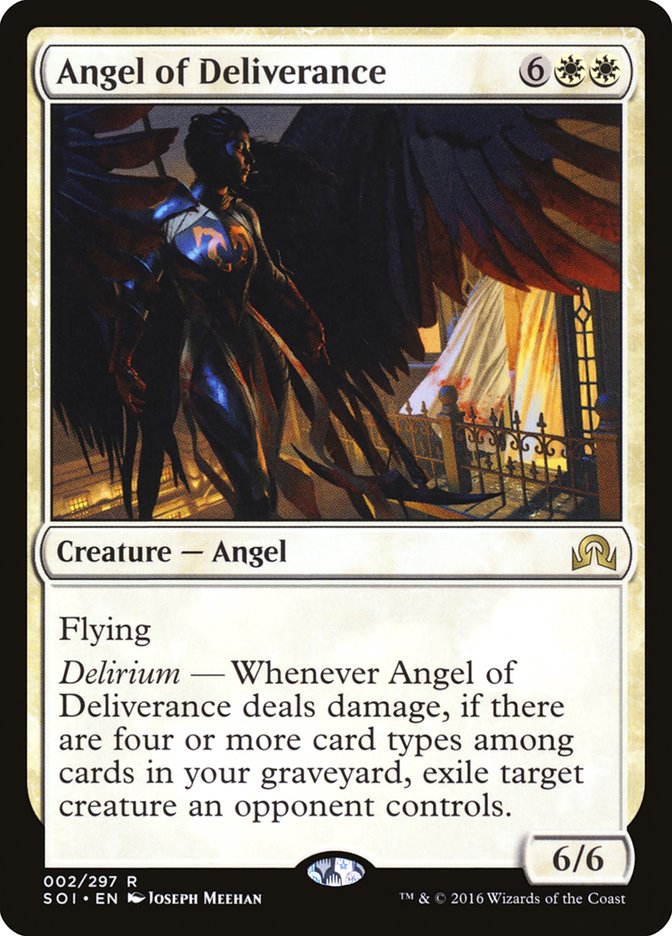
Of all of the 13 different card types, eight of them are relevant for delirium and can be put into your deck. They are: creature, land, instant, sorcery, artifact, enchantment, planeswalker, and tribal. However, there are no tribal cards legal in Pioneer, leaving just the seven most common types legal there. Delirium abilities are active if you have four or more card types among the cards in your graveyard. Delirium is a cool mechanic from back in Shadows Over Innistrad that was designed as a modern version of threshold.
These four different types don’t have to be represented by four separate cards. It’s possible to have all four represented on just two cards. For example, if your graveyard contains only Tree of Tales and Nameless Inversion, delirium abilities will be active.
What’s the Biggest a Tarmogoyf Can Be?
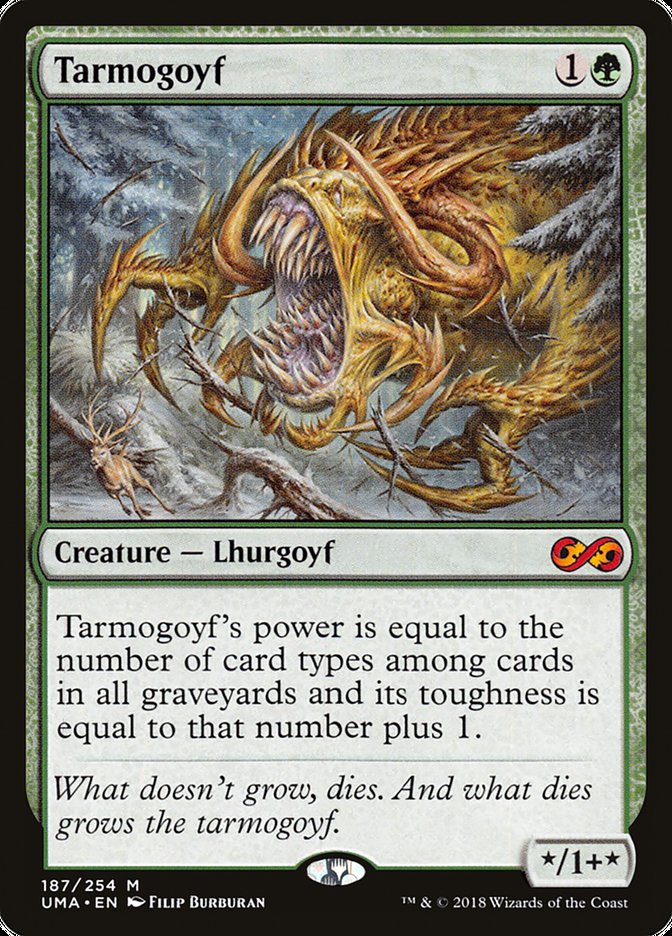
Tarmogoyf has been a mainstay of midrange decks in eternal formats ever since it was first printed back in 2007. As a Modern Jund player myself, I’ve cast a lot of them in my time. As I already mentioned, there are eight card types that you can put into a deck, meaning that the biggest a Tarmogoyf can get on its own is 8/9. This along with delirium is often why midrange decks run cards like Seal of Fire or Tarfire as ways of quickly dumping extra card types into the graveyard.
You may be so inclined to use a Tarmogoyf die, which only goes as high as 6/7. In reality, Tarmogoyf is unlikely to get bigger than this anyway. I can only remember one time I got my own Goyf up to the maximum 8/9. However, as a seasoned Magic Judge, I’d advise caution when using these dice and actually advise against using them in a competitive paper event when we get to do those again.
It’s fairly common to see issues arise from players relying on a die to determine the size of a Tarmogoyf on the battlefield and not noticing that it changed. This can cause communication issues and result in difficult judge scenarios, so I find it’s best to avoid the dice altogether. Keep checking the size of your Goyfs whenever it’s relevant to do so.
Also, as a fun fact for you: when Tarmogoyf was first printed in Future Sight, its reminder text contained the first reference to planeswalkers. They were first printed in the following set, Lorwyn. Each card that used the future-shifted frame in Future Sight contained some sort of precursor to something that had never been done in Magic before.
Is Tribal Type Now Kindred Type?
Yes, the tribal card type was replaced by the kindred card type due to Wizards updating its terminology.
What Happens If Something Changes a Card’s Type?
Changing a card's type can make for some fairly messy rules interactions. There are several ways to change the properties of cards being used in Magic. We call these “continuous effects” as they have a lasting effect on the game. One thing you can modify with continuous effects is card types. I just want to take a moment to go over the easier interactions and what some of these effects might look like.
These effects can generally be worded in one of two ways. Blood Moon says, “Nonbasic lands are Mountains,” whereas Urborg, Tomb of Yawgmoth says: “Each land is a Swamp in addition to its other land types.” The key difference here is the words “in addition to.” If you don’t see this wording, like on Blood Moon, then the type change will overwrite whatever types the card had before.
There are also cases where cards have abilities that turn them into a new type. This is particularly common when non-creature cards become creatures. There are examples of each of the other permanent types becoming creatures in some way. These abilities might also overwrite their previous types but it depends on wording. For example, Sarkhan, the Dragonspeaker’s first loyalty ability turns him into a dragon until the end of the turn. He’s no longer considered a planeswalker while this is active. On the other hand, many creature lands stay lands when they animate themselves, like Faceless Haven. Keep in mind that this is explicitly stated on the card when it happens.
While these types of effects generally come in all sorts of varieties, here are a few things to keep in mind:
- Abilities will only change one set of types when changing subtypes. If an ability changes a card’s creature types then it doesn’t modify any land types, artifact types, or whatever else the card might have. For example, Blood Moon changes Dryad Arbor into a Mountain. This overwrites the Forest subtype it already had, but not the dryad subtype.
- We have supertypes, types, and subtypes. If an ability is changing one of those three, it won’t change the others. For example, Oko, Thief of Crowns can turn artifacts or creatures into 3/3 elk creatures. This ability overwrites a permanent’s card types and its creature types, but not its supertypes. Legendary creatures will remain legendary and so on. This is also why Dryad Arbor will remain as a creature in the above example.
- Creatures can’t be attached to other permanents. It’s possible to turn an equipment or an aura into a creature, but they can’t stay attached to anything if this happens.
- There’s a reason I chose Blood Moon and Urborg, Tomb of Yawgmoth as examples here. This is one of the most common examples of type-changing effects interacting. When judging PTQs in Modern, this question would come up at least once per event. The answer is simple: Blood Moon wins. When both of these cards are on the battlefield, Urborg, Tomb of Yawgmoth’s ability gets overwritten by Blood Moon turning it into a Mountain. This means that all nonbasic lands will become Mountains and nothing will be a Swamp. The explanation why isn’t so simple, so we’ll save it for another time.
This is a very difficult section of the rules. I could write entire articles covering these intricacies, so this isn’t the place to discuss them all. This is just to give you all a small taste of how complex all of this can get.
Wrap Up
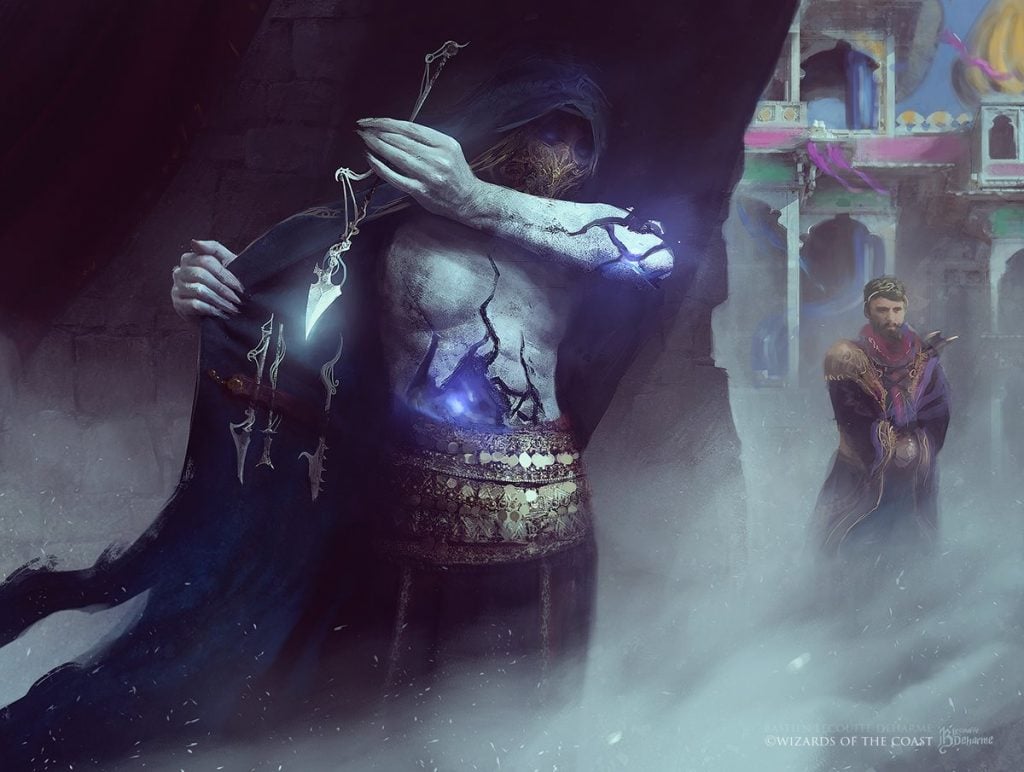
Tidy Conclusion | Illustration by Bastien L. Deharme
All in all, card types are a broad topic with lots to discuss. Magic has a 30-year history, and a lot has changed over the decades. There are a couple of types we missed even with all of the types we’ve discussed. Interrupts and mana sources were removed from the game and combined into instants during the famous Sixth Edition rules change back in 1999.
We haven’t had a new card type created since planeswalkers were introduced back in 2007. That actually means that planeswalkers have existed in Magic for longer than they haven’t. It’s been more common for WotC to create new subtypes than main type lately. Sagas were probably the biggest change in recent years, and they proved to be a big hit, being revisited multiple times since their first printing in Dominaria. It’s certainly possible that we might see some new types in the future, but I wouldn’t be surprised if the eight main types that we have now will stay the same for years to come.
If you could design a new card type for Magic, how would you do it? Do you think there’s something missing from Magic that would make for a great new type?
Thank you for your time today. If you have any type-related rules questions that you’d like answered, let me know in the comments and I’d be happy to help! You could also hop over to our Discord if you want a longer discussion.
Until next time, take care of yourselves and stay safe!
Follow Draftsim for awesome articles and set updates:
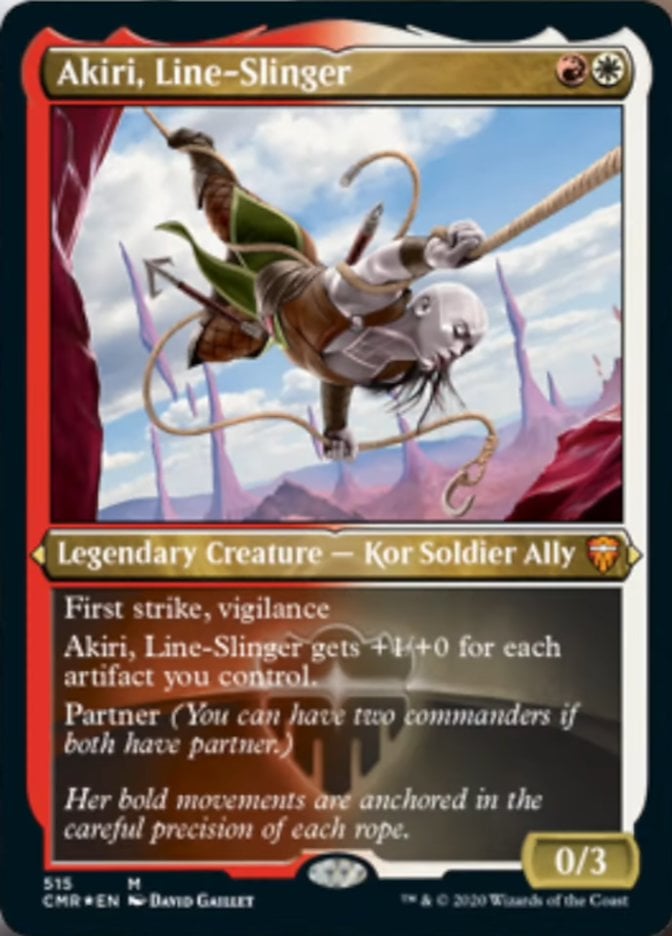
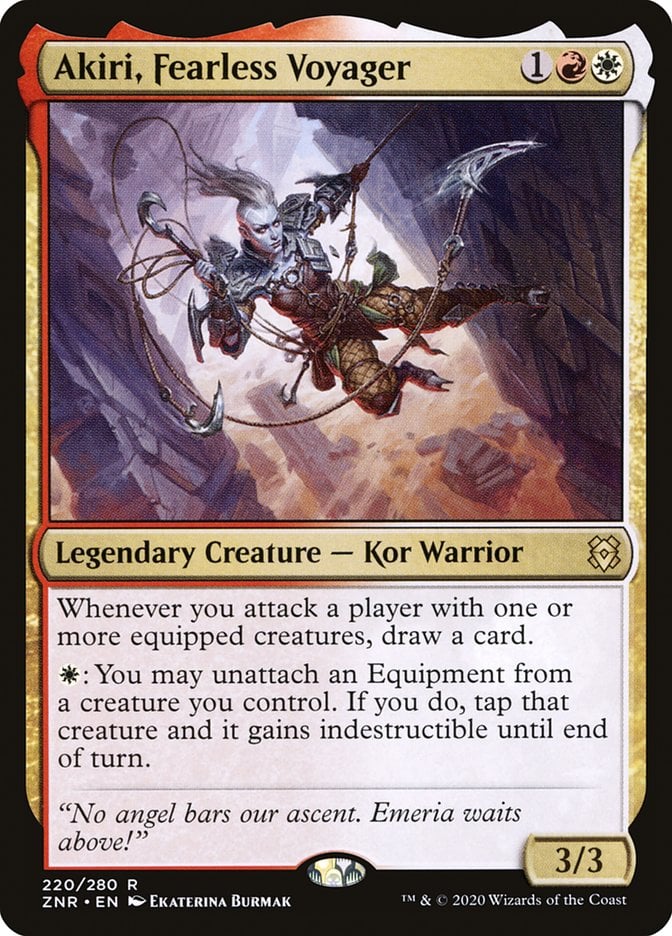
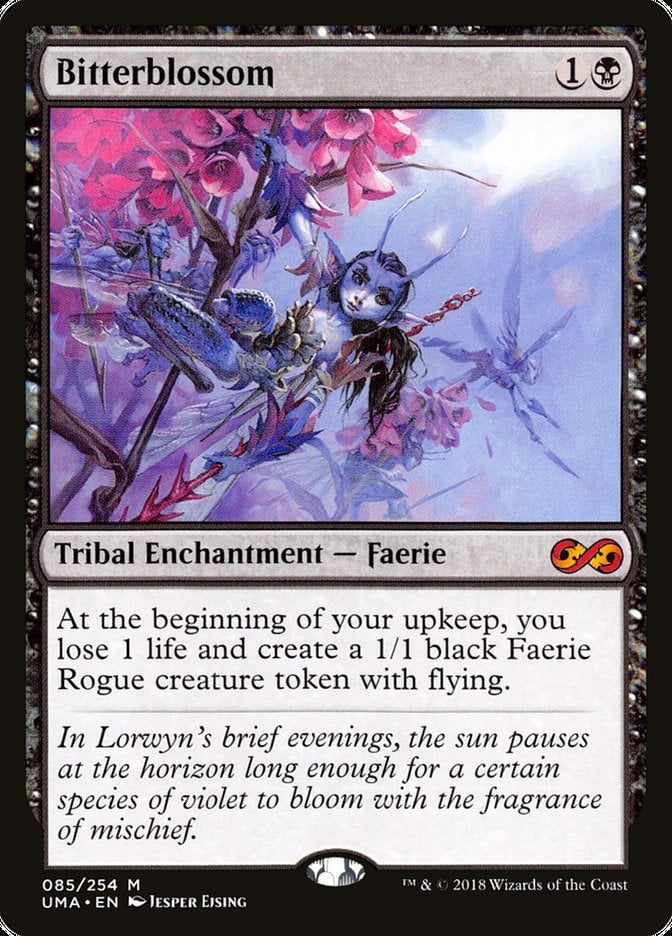
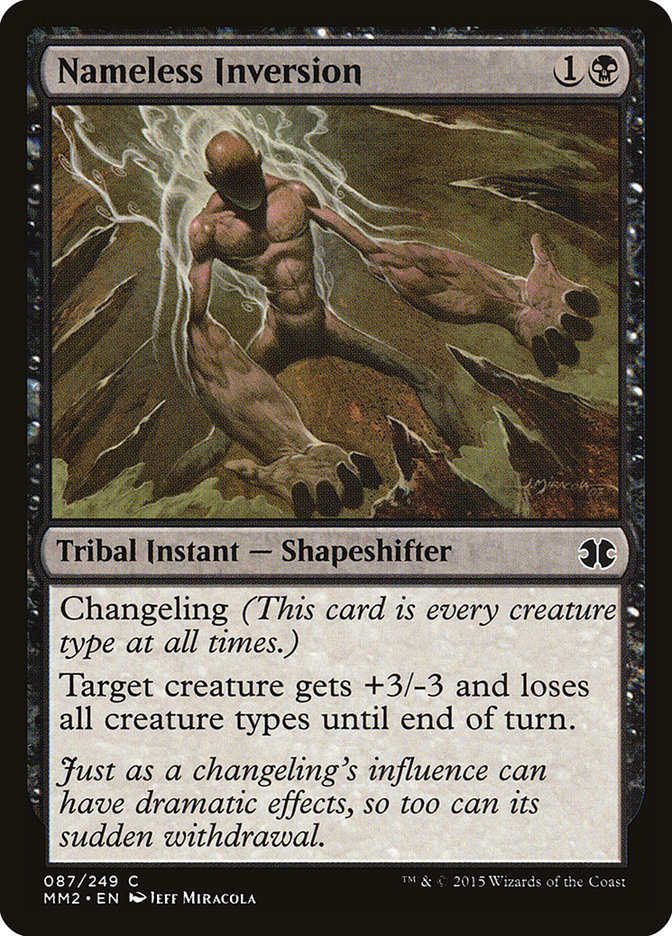

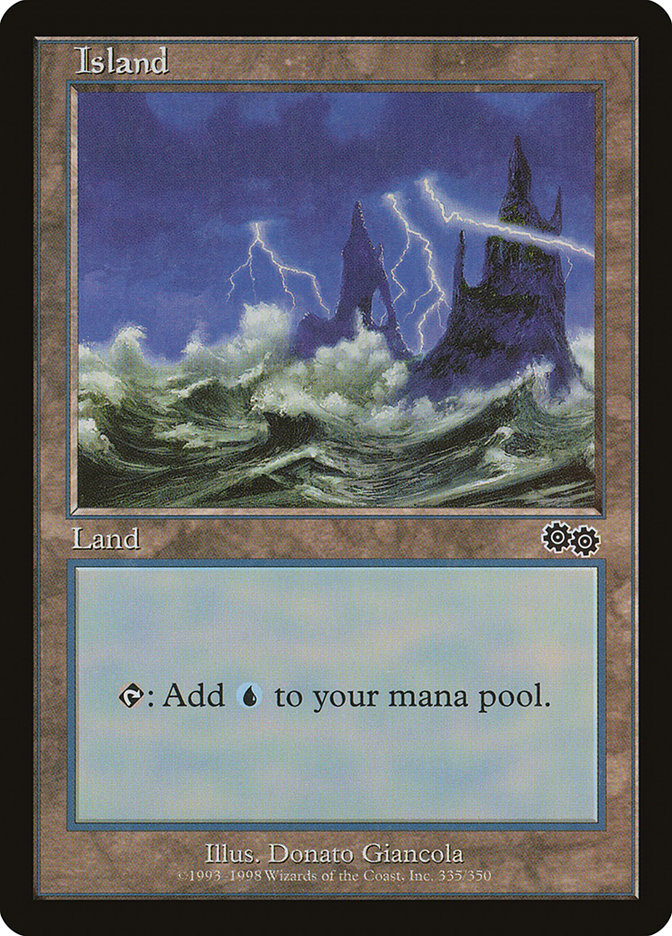
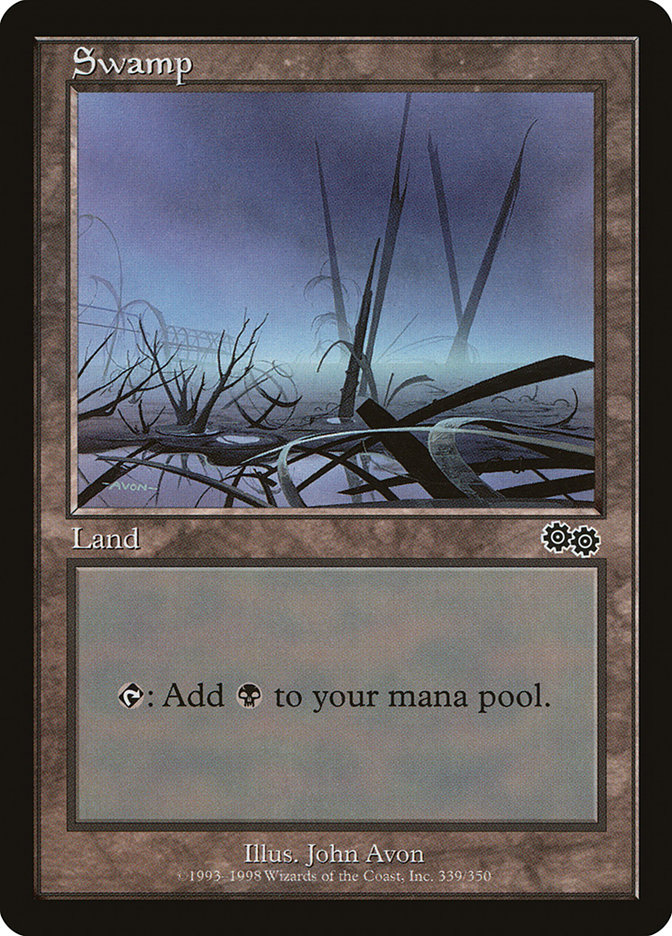
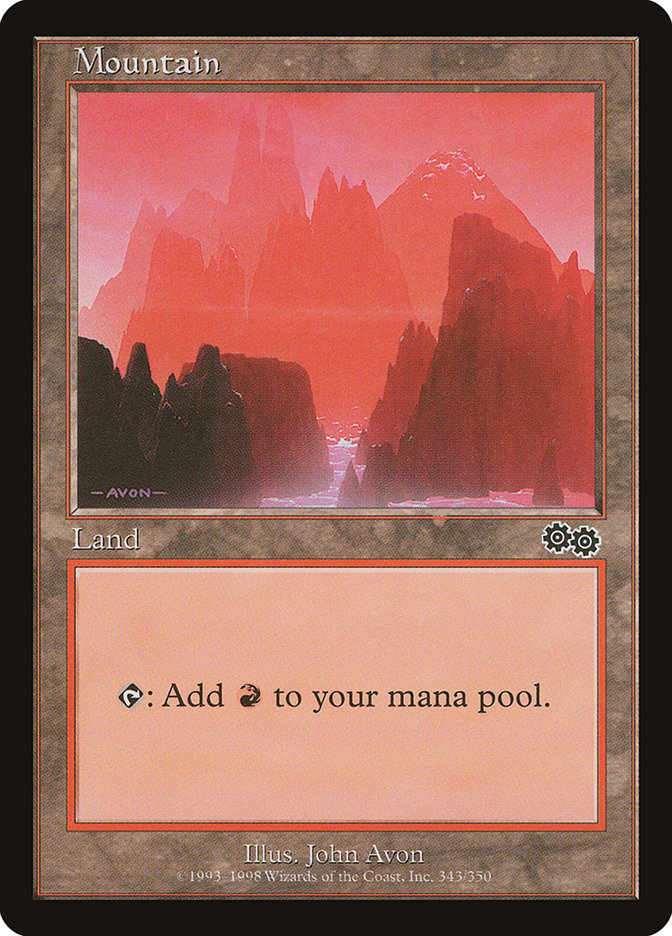
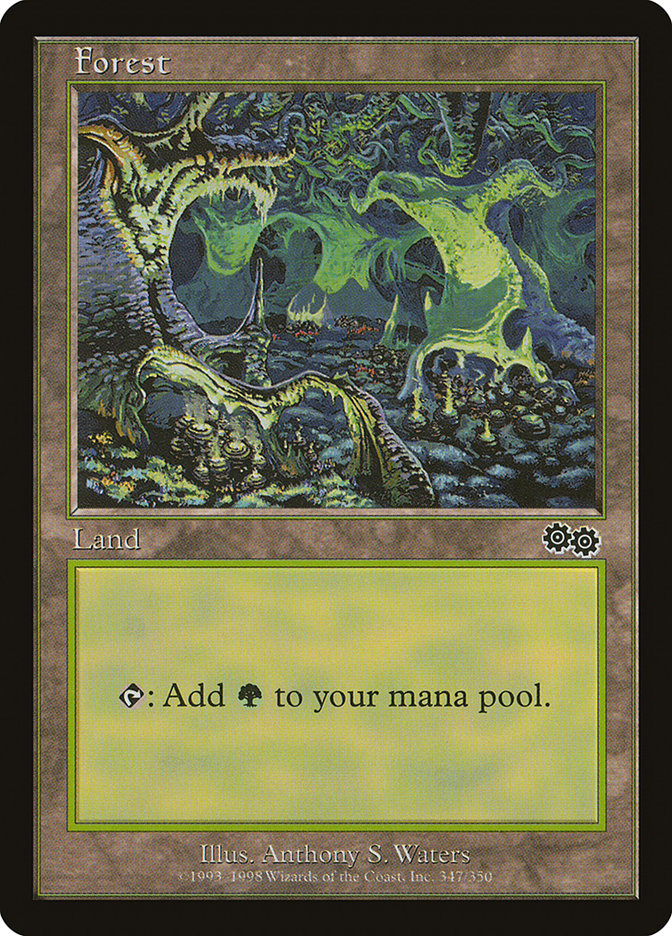
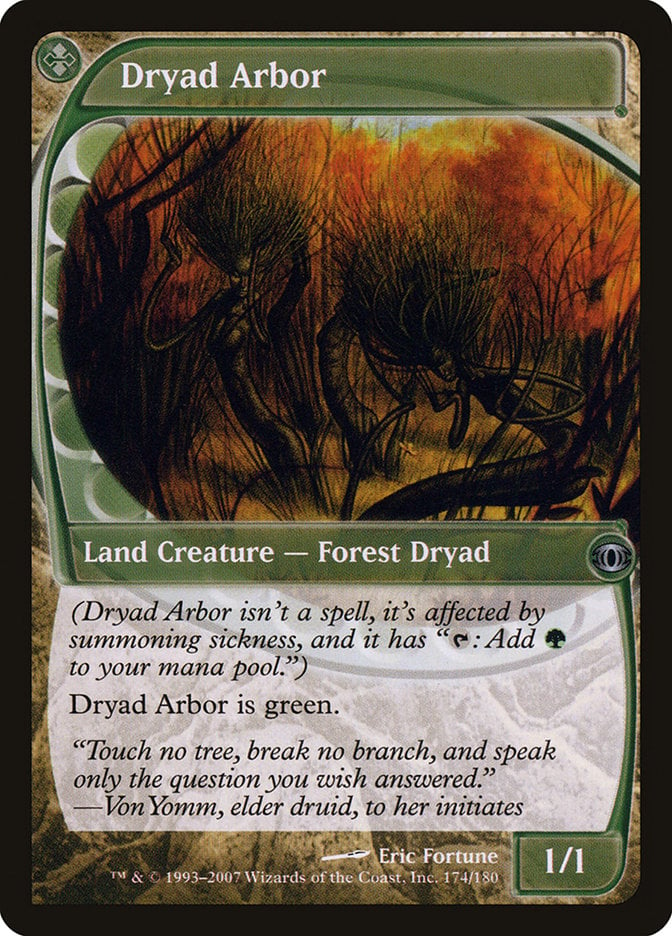
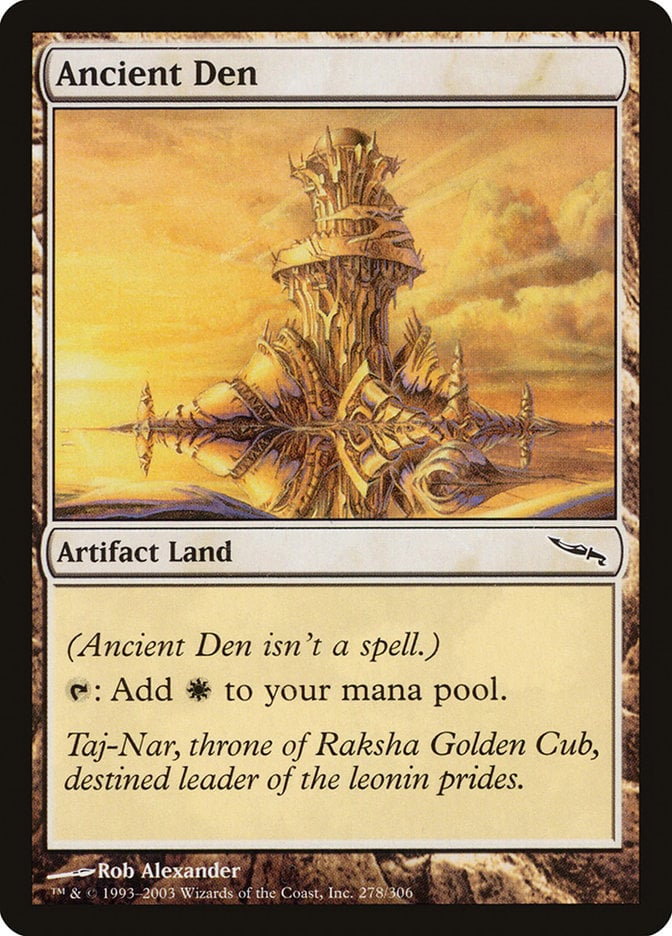

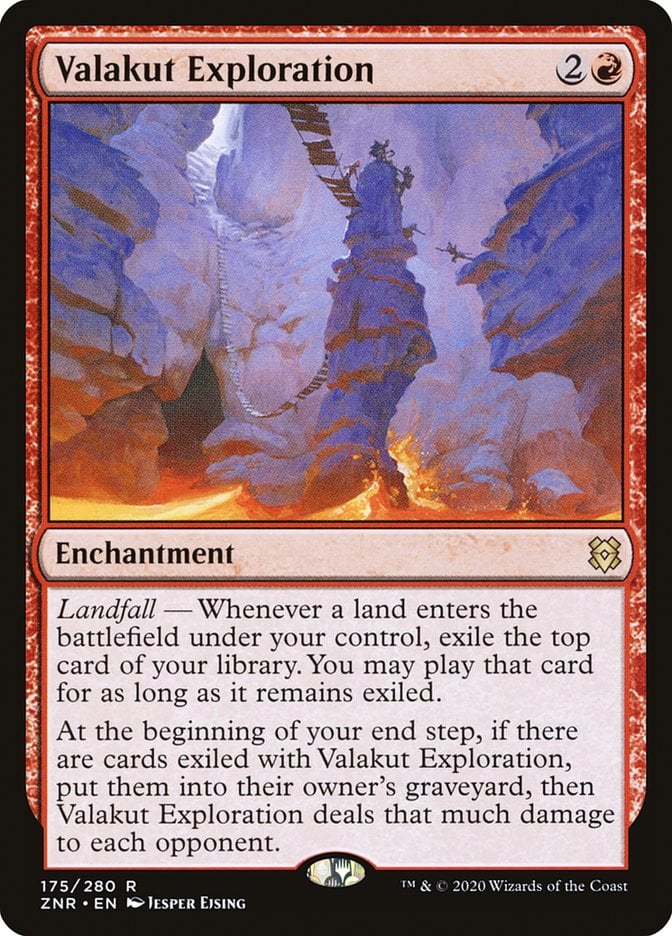
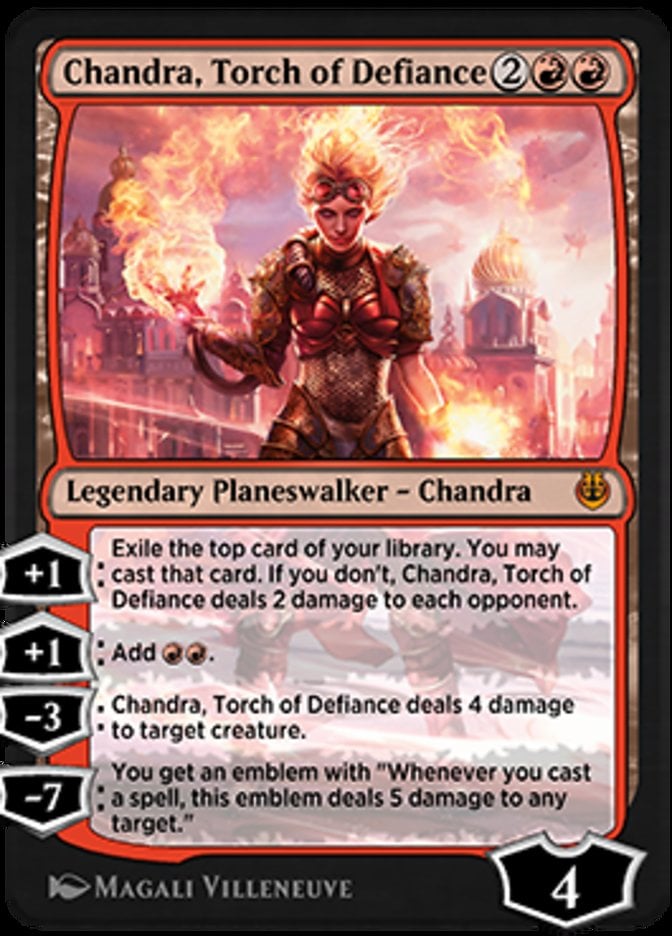
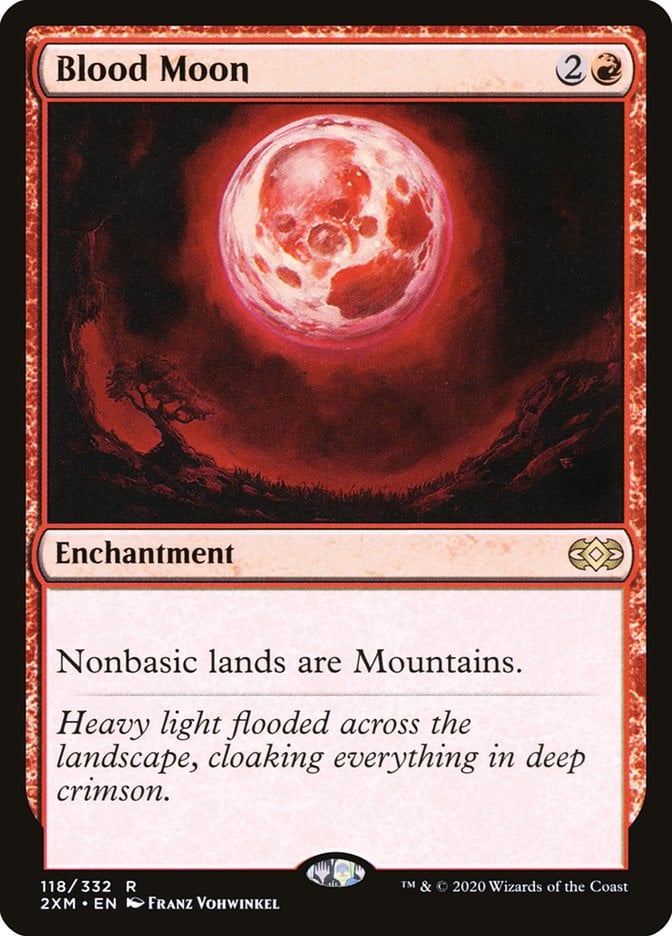
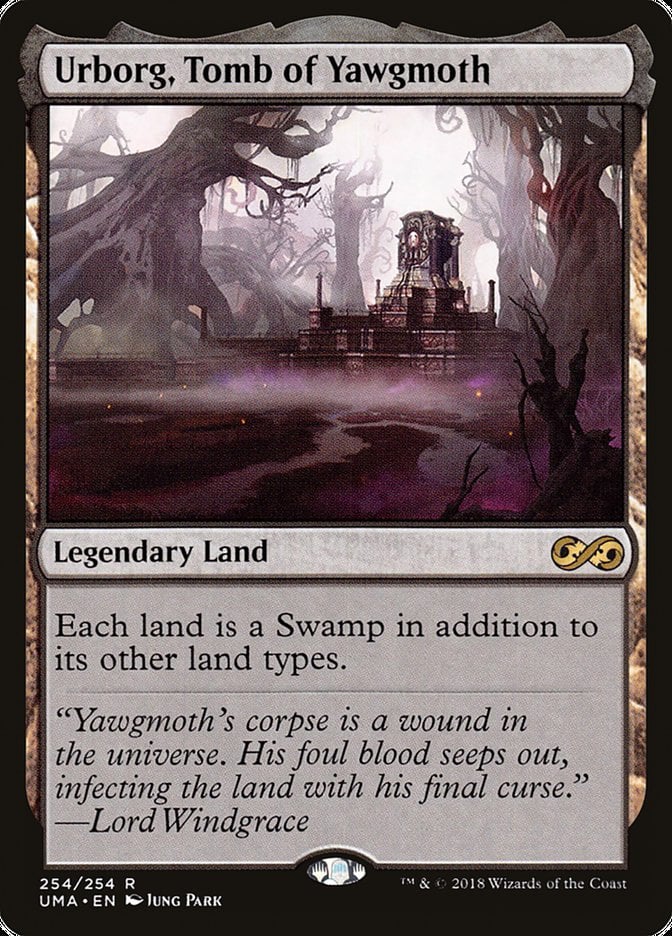
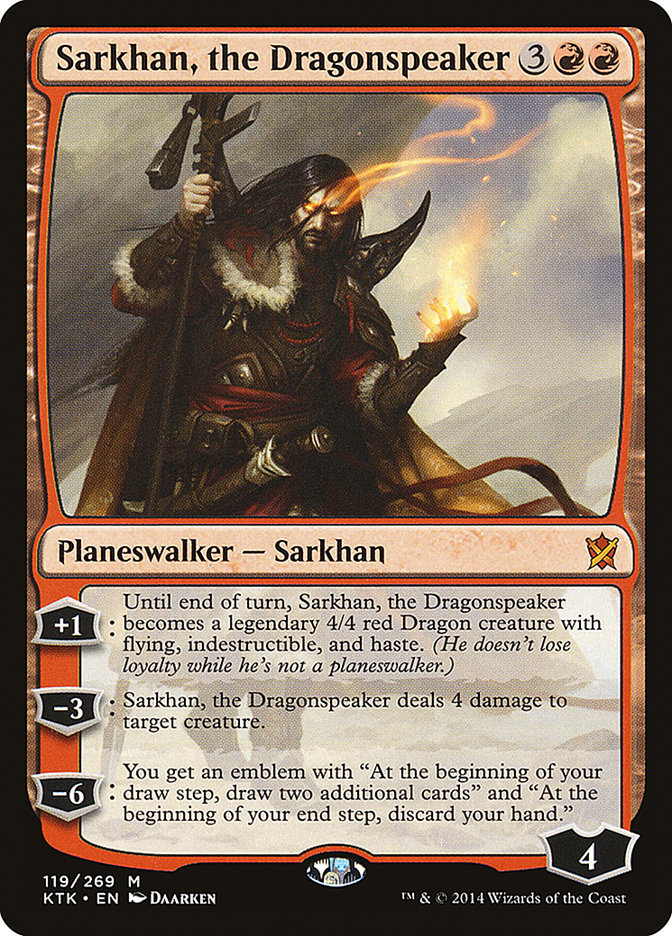
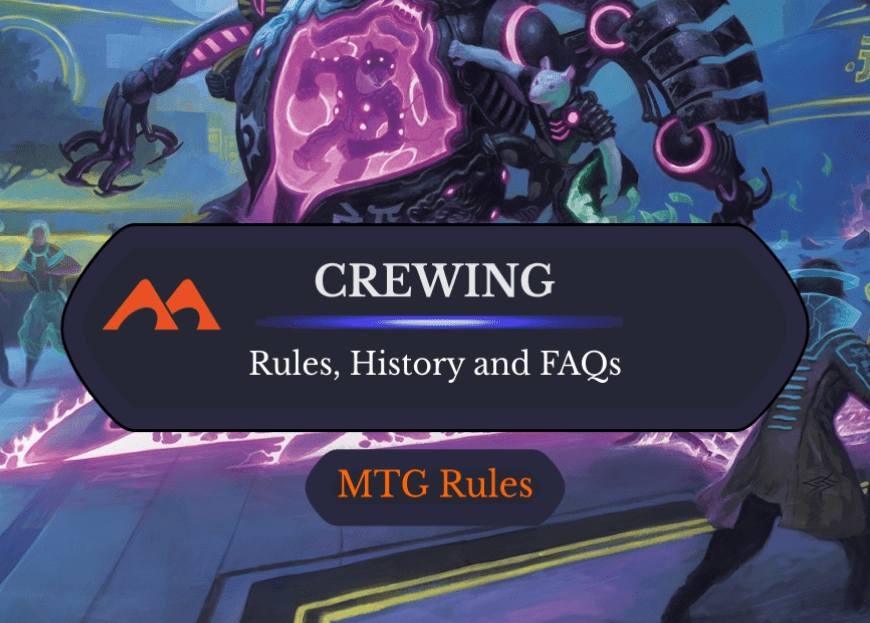
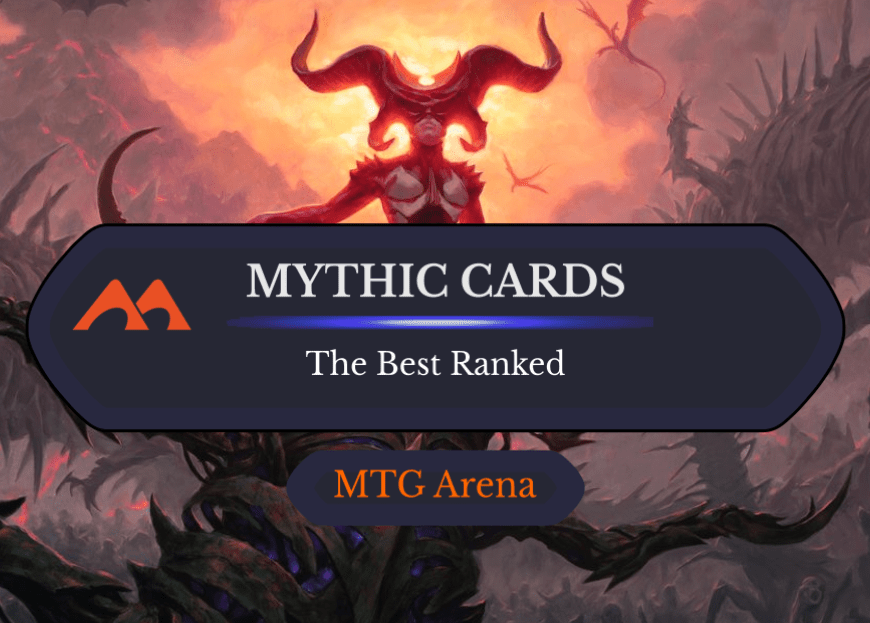
Add Comment